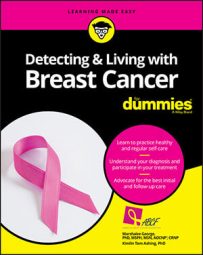Considering breast surgery
Breast surgery is a procedure used to remove the cancer from the breast. There are various types of breast surgery, including lumpectomy, mastectomy, axillary node dissection, sentinel lymph node dissection, and more. A surgeon will recommend the right surgery based on the size of the cancer, the size of the breast, whether the cancer has spread to lymph nodes under the arm, and patient preference.The decision for which type of breast surgery should take place is ultimately the patient's — in other words, it's your decision. But you must be informed of all the breast surgical options available to you with consideration for the risk and benefits before making a decision.
Treating breast cancer with radiation
Radiation is a treatment option often used in conjunction with a lumpectomy as standard of treatment. The radiation beam is directed to the area where the cancer is located (while sparing surrounding healthy tissue) to kill any microscopic cancer cells that may have remained at the surgical site.Treating breast cancer with chemotherapy
Chemotherapy is a treatment option that uses various types of medicines that go to work on the various stages of the cell cycle. Chemotherapy medicines are given in combination, so when the cancer cell starts to divide and goes through the various stages of the cell cycle, the specific medicines activate at that cycle for maximum cell death.Treating breast cancer with endocrine (hormonal), biological, and other cutting-edge therapies
Endocrine therapy is also called hormonal therapy. Endocrine therapy is used to decrease estrogen in the breast tissue in the following situations:- To reduce the size of the breast cancer (neo-adjuvant therapy or treatment before surgery).
- To reduce the risk of cancer coming back.
- To reduce the risk of cancer developing in individuals who are at high risk for breast cancer.

